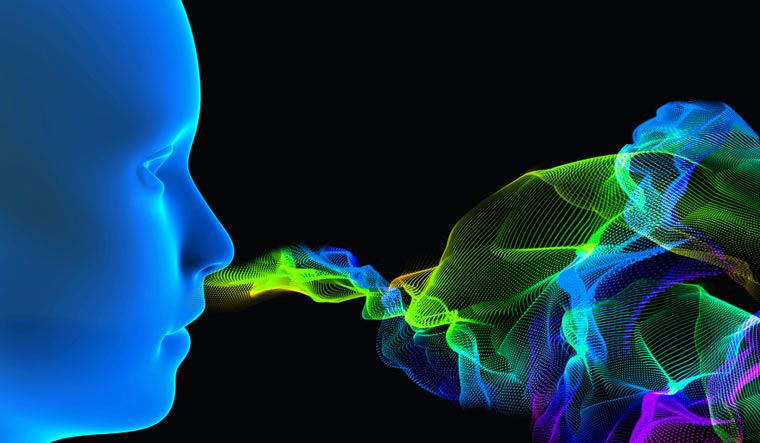Medical detection dogs can smell many kinds of diseases like lung, breast, ovarian, bladder, and prostate cancers, and possibly Covid-19. In some cases, involving prostate cancer for example, the dogs had a 99 percent success rate in detecting the disease by sniffing patients' urine samples.
But since it takes long time to train such dogs, and their availability is limited, scientists have been hunting for ways of automating the amazing olfactory capabilities of the canine nose and brain, in a compact device.
A team of researchers at MIT and other institutions has come up with a system that can detect the chemical and microbial content of an air sample with even greater sensitivity than a dog's nose. They coupled this to a machine-learning process that can identify the distinctive characteristics of the disease-bearing samples.
The findings, which the researchers say could someday lead to an automated odor-detection system small enough to be incorporated into a cellphone, are being published in the journal PLOS One, in a paper by Clare Guest of Medical Detection Dogs in the U.K., Research Scientist Andreas Mershin of MIT, and 18 others at Johns Hopkins University, the Prostate Cancer Foundation, and several other universities and organizations.
"Dogs, for now 15 years or so, have been shown to be the earliest, most accurate disease detectors for anything that we've ever tried," said Mershin.
And their performance in controlled tests has in some cases exceeded that of the best current lab tests, he said. "So far, many different types of cancer have been detected earlier by dogs than any other technology."
What's more, the dogs apparently pick up connections that have so far eluded human researchers: When trained to respond to samples from patients with one type of cancer, some dogs have then identified several other types of cancer—even though the similarities between the samples weren't evident to humans.
These dogs can identify "cancers that don't have any identical biomolecular signatures in common, nothing in the odorants," Mershin said. Using powerful analytical tools including gas chromatography mass spectrometry (GCMS) and microbial profiling, "if you analyze the samples from, let's say, skin cancer and bladder cancer and breast cancer and lung cancer—all things that the dog has been shown to be able to detect -- they have nothing in common." Yet the dog can somehow generaliae from one kind of cancer to be able to identify the others.
Mershin and the team over the last few years have developed, and continued to improve on, a miniaturized detector system that incorporates mammalian olfactory receptors stabilized to act as sensors, whose data streams can be handled in real-time by a typical smartphone's capabilities. He envisions a day when every phone will have a scent detector built in, just as cameras are now ubiquitous in phones. Such detectors, equipped with advanced algorithms developed through machine learning, could potentially pick up early signs of disease far sooner than typical screening regimes, he says—and could even warn of smoke or a gas leak as well.
In the latest tests, the team tested 50 samples of urine from confirmed cases of prostate cancer and controls known to be free of the disease, using both dogs trained and handled by Medical Detection Dogs and the miniaturized detection system. They then applied a machine-learning program to tease out any similarities and differences between the samples that could help the sensor-based system to identify the disease. In testing the same samples, the artificial system was able to match the success rates of the dogs, with both methods scoring more than 70 percent.
The miniaturised detection system, Mershin says, is actually 200 times more sensitive than a dog's nose in terms of being able to detect and identify tiny traces of different molecules, as confirmed through controlled tests mandated by DARPA. But in terms of interpreting those molecules, "it's 100 percent dumber." That's where the machine learning comes in, to try to find the elusive patterns that dogs can infer from the scent, but humans haven't been able to grasp from a chemical analysis.




